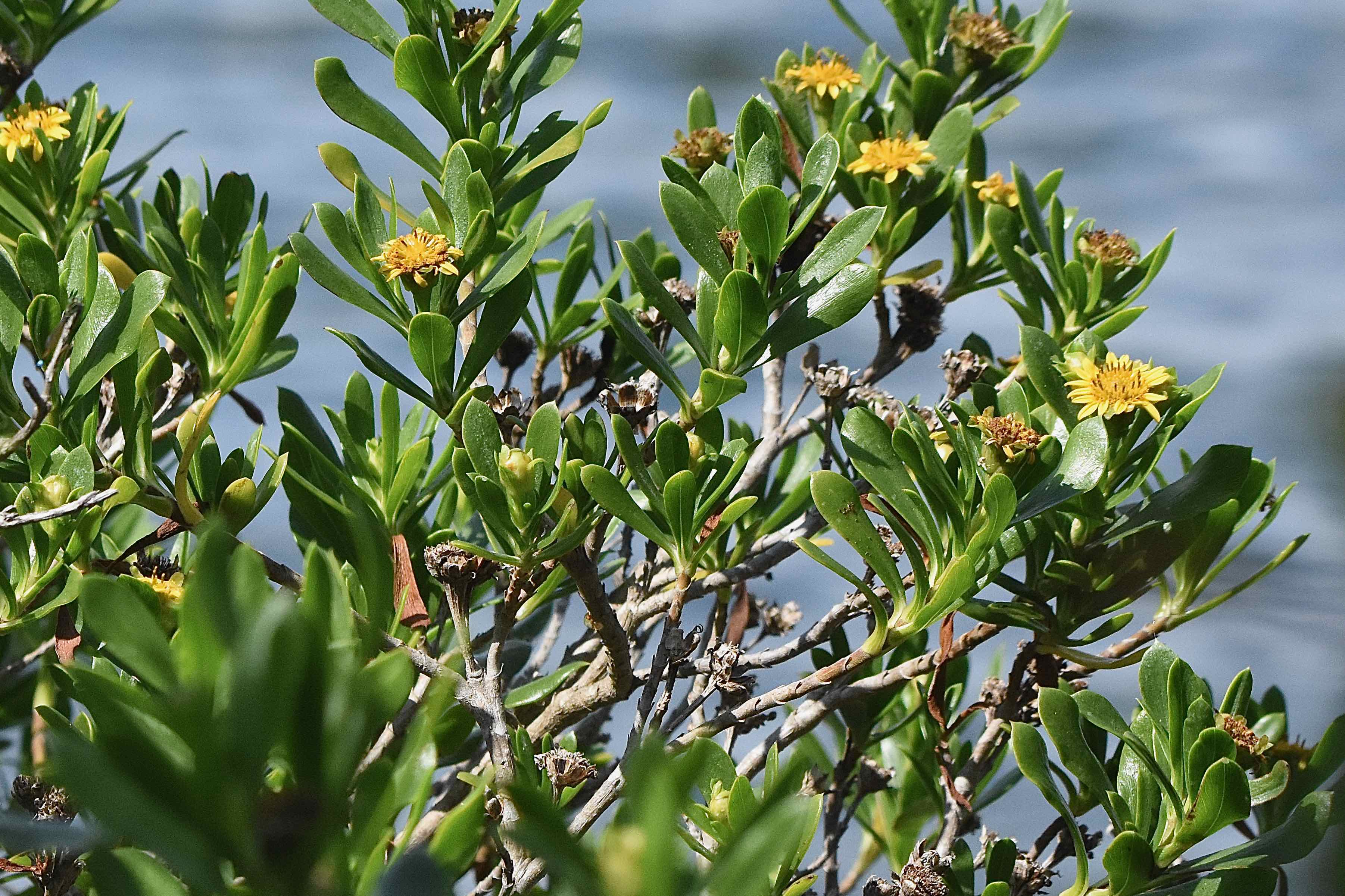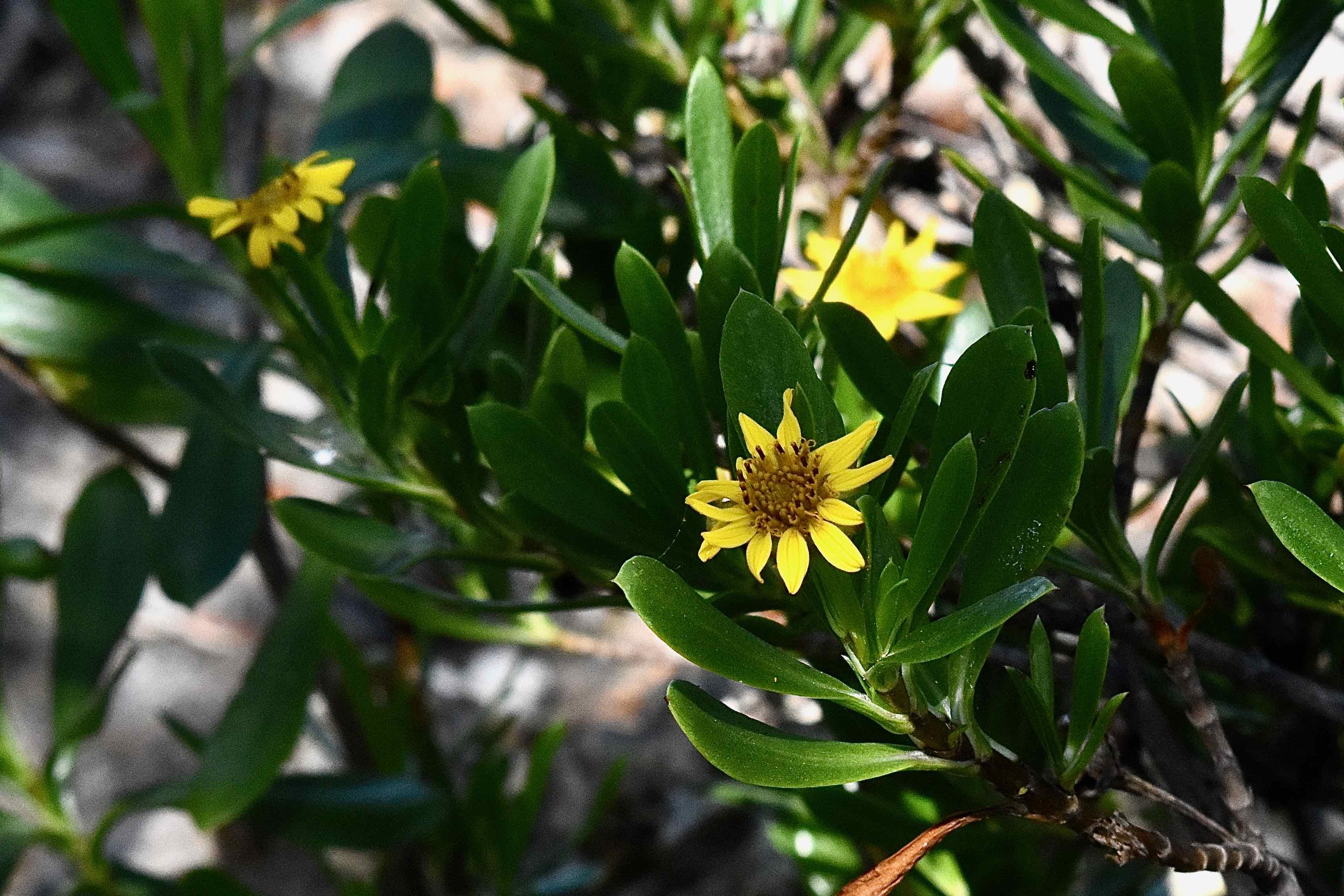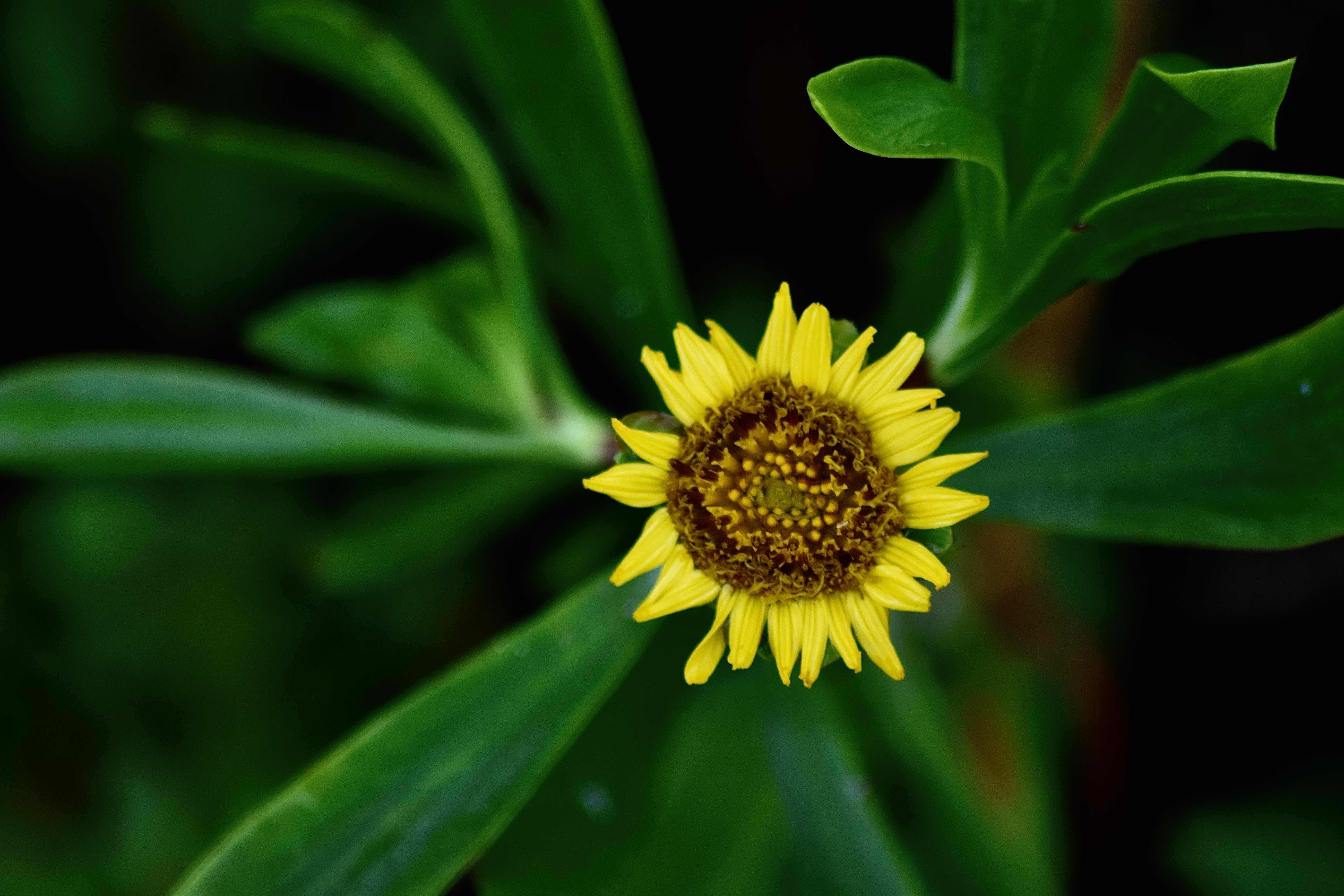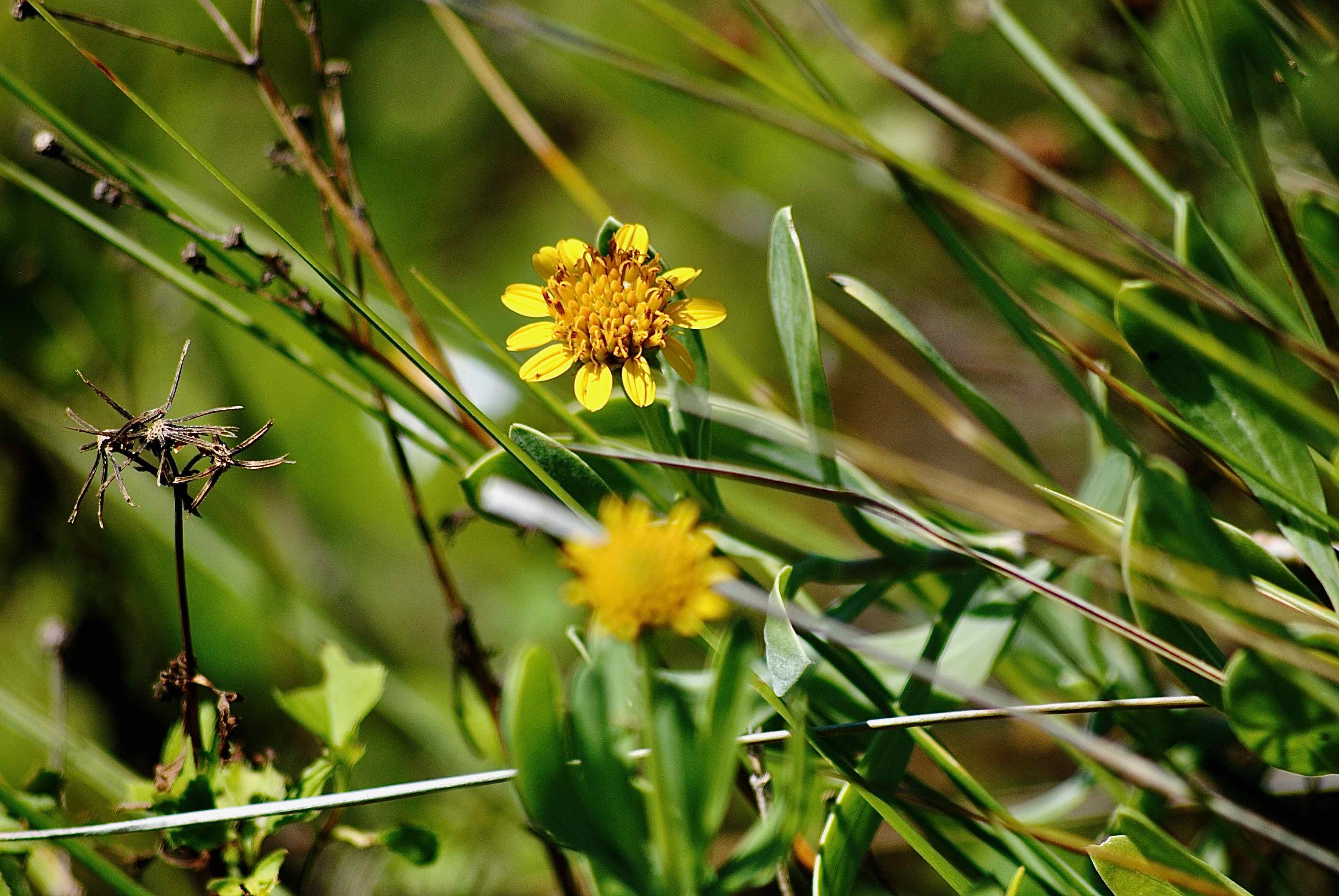
Tree seaside oxeye, photographed at Biscayne National Park, Homestead, Miami-Dade County, in February 2018.
The first thing to know about tree seaside oxeye, Borrichia arborescens, is that despite the name, it isn't a tree at all. It's a shrub and rather short one at that.
Tree seaside oxeye is a Florida native with an extremely limited natural range within the Sunshine State. It's only found in the Florida Keys and limited parts of Miami-Dade County near Key Biscayne and just north of the Monroe County line. It is cultivated and used ornamentally farther north along the coast, at least as far as New Smyrna Beach and probably farther (we've seen references of it to Virginia), but there is no record of it becoming naturalized anywhere.
Its native range also includes Bermuda, the Caribbean, southern Mexico and Guatemala.
Tree seaside oxeye is a perennial, a member of Asteraceae, the sunflower family. It tops out at about five feet, but spreads much further and is capable of forming large patches. It is found in coastal areas.
It has fleshy, gray-green leaves two to four inches long, large, yellow compound flowers that appear all year but peak in the spring and summer. The fruit is small and inconspicuous looking.
It is salt resistant, as might be expected. It can be trained as a hedge or ground cover. It is drought tolerant but it requires full sun. Because of that need for sunlight, tree seaside oxeye usually seeks niches where there is little competition that might shade it out — seaside rocks, dunes, beach strands and along mangrove swamps and marshes.
A variety of butterflies are attracted to tree seaside oxeye's large flowers, including the great white southern, Schaus's swallowtail, and the not so obscure obscure skipper. It is both edible and useful in medicines. In Jamaica, it's used in salads and as an herb. According to Florida Ethnobotany, by Daniel F. Austin, tree seaside oxeye and others of its genus were commonly used throughout the Caribbean to make a medicinal tea for colds, coughs and a variety of other complaints, including back pain. It was also used as antidote for eating poisoned fish.
This plant goes by a host of other names, including tree seaside tansy, green sea-oxeye daisy, silver seaside oxeye, tall seaside oxeye, silver sea ox-eye, oxeye daisy, sea daisy, seaside tansy, gull feed, clavelón de playa, and fleur-sorleil bord de mar.
Fun fact: According to the U.S. Department of Agriculture, the number of oxeye seeds per kilogram averages 870,000.



